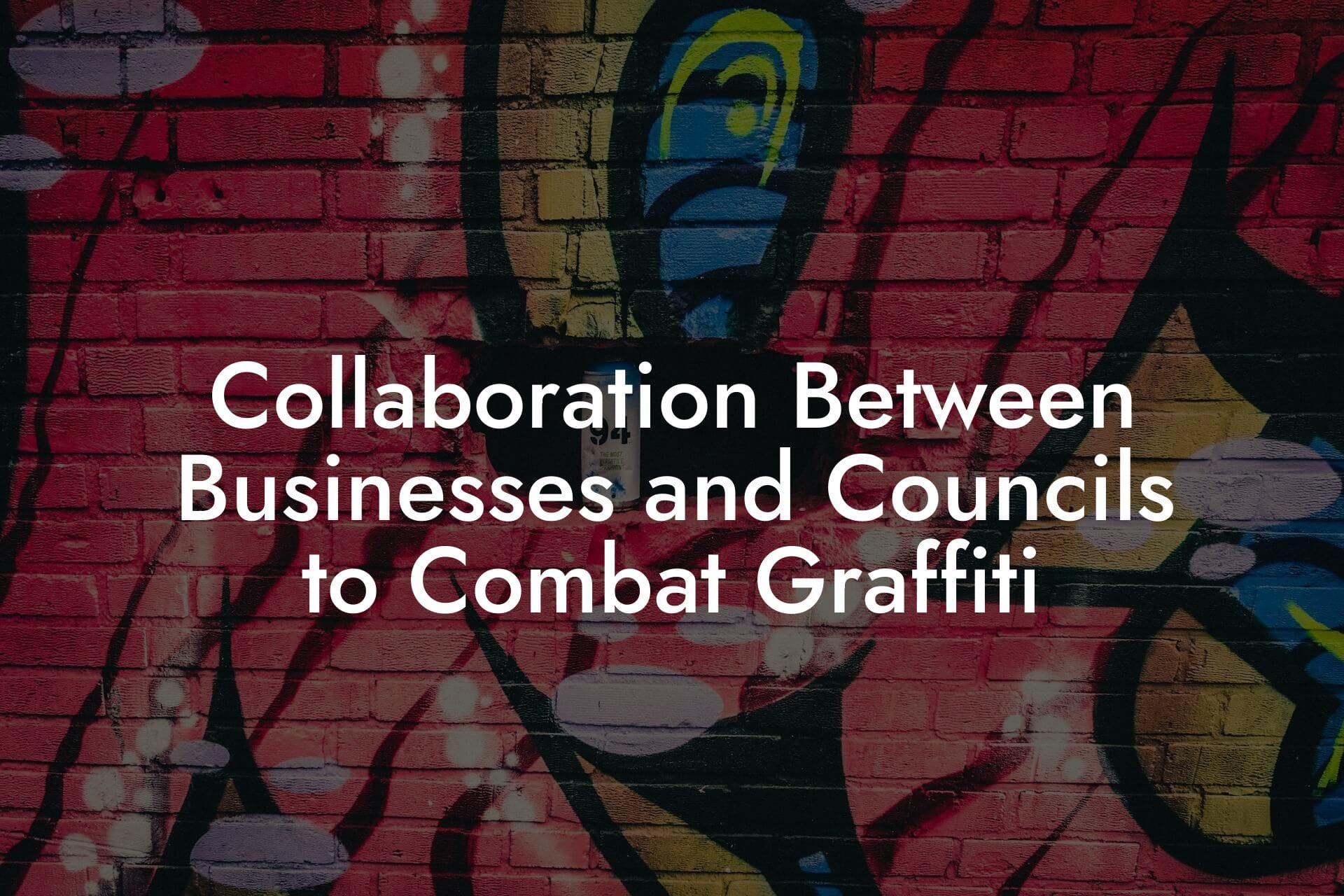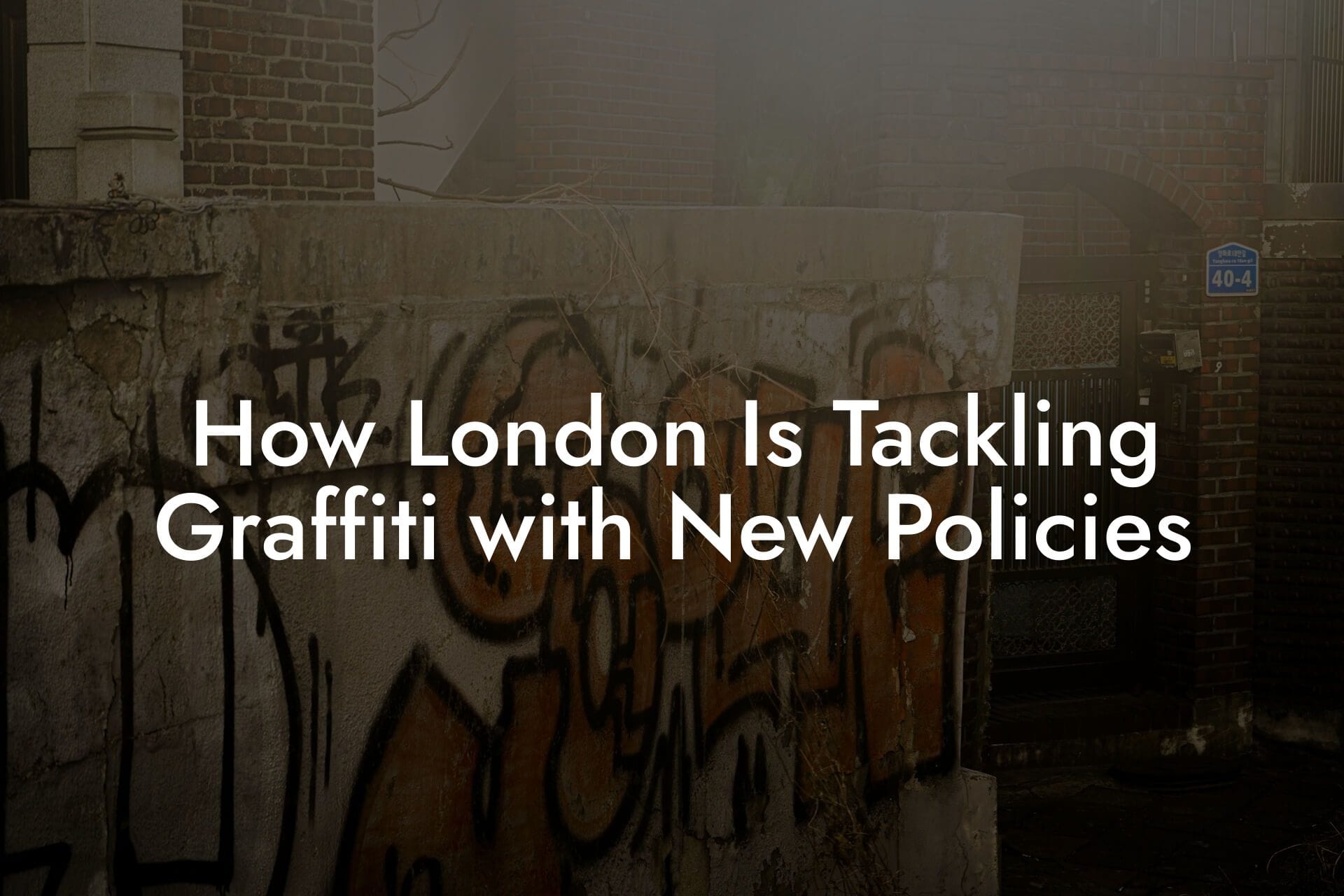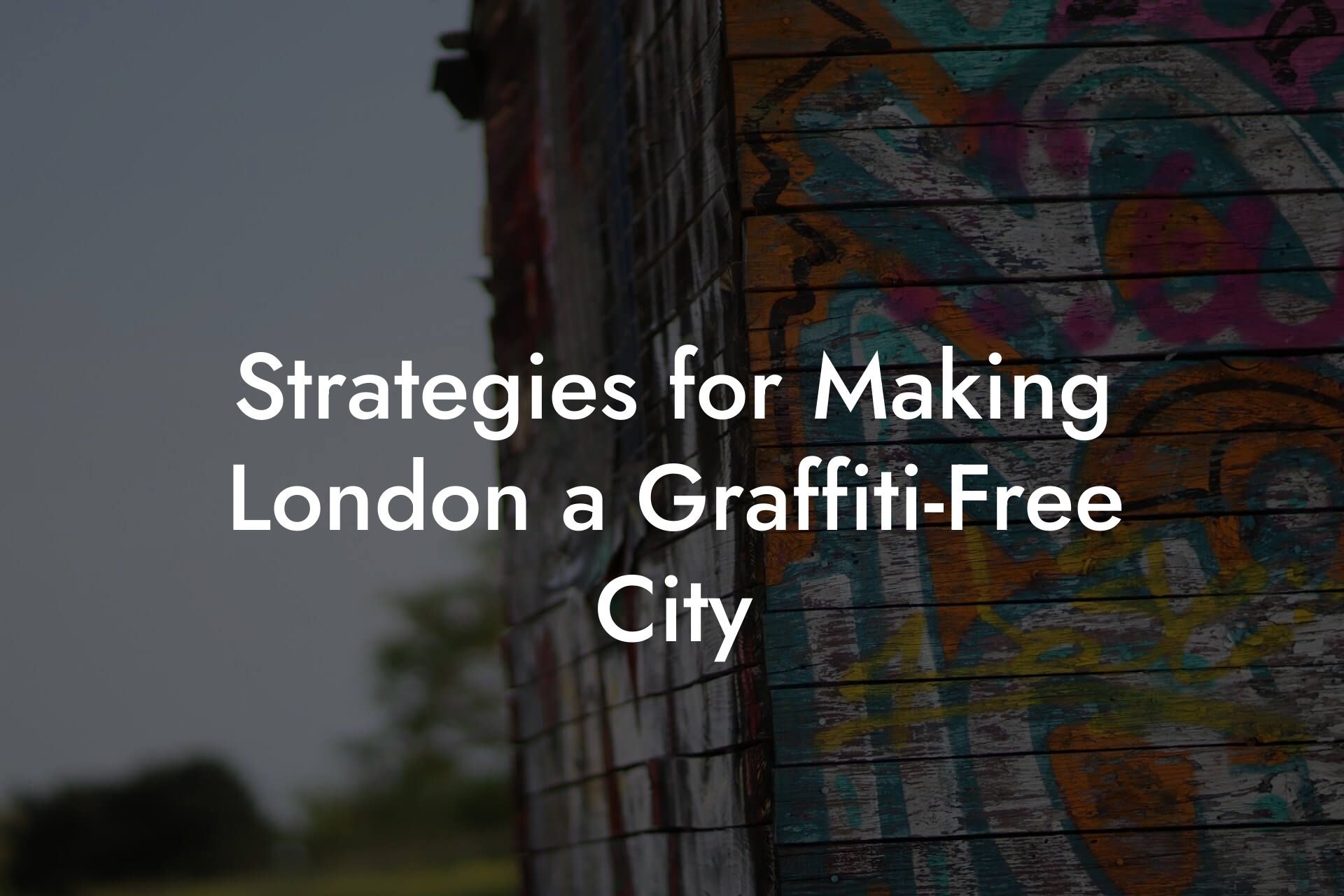Graffiti is a pervasive problem in urban areas, causing damage to property, disrupting communities, and perpetuating a culture of vandalism. As a leading graffiti removal service in London, we at Graffiti Removal London have seen firsthand the negative impact that graffiti can have on individuals, businesses, and society as a whole. One of the most effective ways to combat graffiti is to educate youth on its consequences, and in this article, we will explore the importance of doing so.
Table of Contents
Why Youth are Prone to Graffiti
Youth are often drawn to graffiti as a means of self-expression, rebellion, or peer pressure. They may see it as a way to leave their mark on the world, to challenge authority, or to fit in with their friends. However, this behavior can have serious consequences, including criminal charges, fines, and damage to their reputation and future opportunities.
The Legal Consequences of Graffiti
In the UK, graffiti is considered an act of vandalism and is punishable by law. Those caught engaging in graffiti can face fines, community service, or even imprisonment. In addition, graffiti can lead to a criminal record, which can have long-term consequences for education, employment, and travel opportunities.
The Financial Consequences of Graffiti
Graffiti can also have significant financial consequences for individuals, businesses, and communities. The cost of cleaning up graffiti can be substantial, and in some cases, it can be difficult or impossible to remove completely. This can lead to decreased property values, lost business, and a decline in community morale.
The Social Consequences of Graffiti
Graffiti can also have social consequences, perpetuating a culture of disrespect for the law and for others' property. It can contribute to a sense of disorder and decay in communities, undermining social cohesion and community pride. Furthermore, graffiti can be offensive or hateful, promoting discrimination and intolerance.
The Environmental Consequences of Graffiti
Graffiti can also have environmental consequences, particularly when it involves the use of harmful chemicals or solvents. These substances can contaminate soil, water, and air, posing a risk to human health and the environment. Additionally, the clean-up process can itself be environmentally damaging, using large amounts of water and energy.
How to Educate Youth on the Consequences of Graffiti
So, how can we educate youth on the consequences of graffiti? One approach is to engage with them directly, through workshops, presentations, and community programs. This can involve discussing the legal, financial, social, and environmental consequences of graffiti, as well as exploring alternative forms of self-expression and creativity.
Another approach is to involve youth in the clean-up process, providing them with a hands-on opportunity to see the impact of graffiti firsthand. This can be a powerful way to convey the consequences of graffiti and to promote a sense of responsibility and ownership.
Finally, it is essential to provide youth with positive alternatives to graffiti, such as art programs, community service projects, and mentorship opportunities. By providing them with constructive outlets for their energy and creativity, we can help to redirect their behavior and promote a more positive, respectful attitude towards their communities.
In conclusion, educating youth on the consequences of graffiti is a critical step in preventing this harmful behavior and promoting a more positive, respectful attitude towards communities. By engaging with youth, providing them with alternatives to graffiti, and involving them in the clean-up process, we can help to create a more vibrant, safe, and respectful urban environment. At Graffiti Removal London, we are committed to providing commercial readers with the information and resources they need to address graffiti and promote a cleaner, more sustainable future.
Frequently Asked Questions
What are the consequences of graffiti for young people?
Graffiti can have serious consequences for young people, including criminal charges, fines, and community service. It can also lead to a criminal record, which can affect future education and employment opportunities.
Why is it important to educate youth about the consequences of graffiti?
It's essential to educate youth about the consequences of graffiti to prevent them from engaging in this illegal activity and to promote respect for public and private property. By educating them, we can help them make informed decisions and avoid getting involved in criminal behavior.
At what age should we start educating youth about graffiti?
It's never too early to start educating youth about graffiti. Even children as young as 8-10 years old can understand the basics of why graffiti is wrong and how it affects the community. As they get older, the education can become more in-depth and nuanced.
How can we educate youth about the consequences of graffiti?
There are many ways to educate youth about the consequences of graffiti, including workshops, presentations, community service projects, and mentorship programs. We can also involve local authorities, community leaders, and artists to provide a comprehensive education.
What are some effective ways to prevent graffiti in our community?
Some effective ways to prevent graffiti in our community include increasing surveillance, improving lighting, and engaging youth in positive activities. We can also work with local businesses and property owners to remove graffiti quickly and promote a sense of community pride.
How can we involve youth in graffiti removal and prevention efforts?
Youth can be involved in graffiti removal and prevention efforts through volunteer opportunities, community service projects, and youth-led initiatives. This can help them develop a sense of ownership and responsibility for their community.
What are some alternative forms of self-expression for youth?
There are many alternative forms of self-expression for youth, including art classes, writing workshops, music programs, and sports teams. We can also provide opportunities for youth to express themselves through legal and positive means, such as murals and street art.
How can we address the root causes of graffiti?
To address the root causes of graffiti, we need to understand the underlying issues that lead youth to engage in this behavior. This can include addressing issues of boredom, lack of opportunities, and social and economic inequality.
What role do parents and caregivers play in educating youth about graffiti?
Parents and caregivers play a critical role in educating youth about graffiti by setting a good example, having open and honest conversations, and encouraging positive behaviors. They can also work with schools and community organizations to provide a comprehensive education.
How can we measure the effectiveness of graffiti education and prevention programs?
We can measure the effectiveness of graffiti education and prevention programs by tracking the number of incidents, conducting surveys and focus groups, and evaluating the impact on the community. We can also use data and statistics to identify areas for improvement.
What are some common misconceptions about graffiti?
Some common misconceptions about graffiti include the idea that it's a harmless form of self-expression, that it's a victimless crime, and that it's a sign of a thriving art scene. However, graffiti is a criminal offense that can have serious consequences for individuals and communities.
How can we work with schools to educate youth about graffiti?
We can work with schools to educate youth about graffiti by providing educational resources, workshops, and presentations. We can also work with teachers to incorporate graffiti education into their curriculum and provide opportunities for youth to get involved in graffiti prevention efforts.
What are some resources available for youth who want to learn more about graffiti?
There are many resources available for youth who want to learn more about graffiti, including books, documentaries, and online resources. We can also provide opportunities for youth to talk to artists, community leaders, and law enforcement officials to get a more nuanced understanding of the issue.
How can we encourage youth to take pride in their community?
We can encourage youth to take pride in their community by providing opportunities for them to get involved in positive activities, such as clean-up initiatives, community events, and volunteer work. We can also recognize and reward their efforts to make a positive impact.
What are some alternative punishments for youth who engage in graffiti?
Some alternative punishments for youth who engage in graffiti include community service, restorative justice programs, and counseling. These approaches focus on rehabilitation and education rather than punishment and can be more effective in preventing future incidents.
How can we involve the community in graffiti education and prevention efforts?
We can involve the community in graffiti education and prevention efforts by hosting events, workshops, and town hall meetings. We can also work with community leaders, businesses, and organizations to provide a comprehensive education and promote a sense of community ownership.
What are some common types of graffiti?
Some common types of graffiti include tagging, stencil art, and murals. However, it's important to note that any form of graffiti is illegal and can have serious consequences.
How can we remove graffiti from different types of surfaces?
At Graffiti Removal London, we specialize in removing graffiti from different types of surfaces, including brick, concrete, metal, and glass. We use specialized equipment and techniques to ensure that the graffiti is removed quickly and effectively.
What are some tips for preventing graffiti on my property?
Some tips for preventing graffiti on your property include increasing surveillance, improving lighting, and removing graffiti quickly. We can also provide advice on how to make your property less appealing to graffiti vandals.
How can I report graffiti in my community?
You can report graffiti in your community by contacting your local authorities or reporting it online. You can also contact Graffiti Removal London to report graffiti and request removal services.
What are some ways to involve local authorities in graffiti education and prevention efforts?
We can involve local authorities in graffiti education and prevention efforts by working with them to provide educational resources, hosting joint events, and collaborating on community initiatives. This can help to promote a coordinated approach to addressing graffiti.
How can we evaluate the impact of graffiti education and prevention programs?
We can evaluate the impact of graffiti education and prevention programs by tracking the number of incidents, conducting surveys and focus groups, and evaluating the impact on the community. We can also use data and statistics to identify areas for improvement.
What are some common challenges in addressing graffiti?
Some common challenges in addressing graffiti include lack of resources, lack of community engagement, and lack of awareness about the issue. However, by working together and providing education and resources, we can overcome these challenges and make a positive impact.
How can we make graffiti education and prevention efforts sustainable?
We can make graffiti education and prevention efforts sustainable by providing ongoing education and resources, building community partnerships, and promoting a sense of community ownership. We can also work to address the root causes of graffiti and promote positive alternatives.
Toby Doherty
Toby Doherty is a seasoned graffiti removal expert with over 20 years of experience in the industry. Throughout his career, Toby has helped countless businesses and property owners in London maintain clean, graffiti-free spaces. His extensive knowledge of graffiti removal techniques, from eco-friendly solutions to advanced technologies like laser cleaning, makes him a trusted authority in the field. Passionate about restoring urban environments, Toby combines his hands-on expertise with a commitment to staying up-to-date on the latest industry trends and innovations. When he’s not out in the field, Toby shares his insights through detailed articles, offering practical advice on everything from graffiti prevention to legal considerations.




